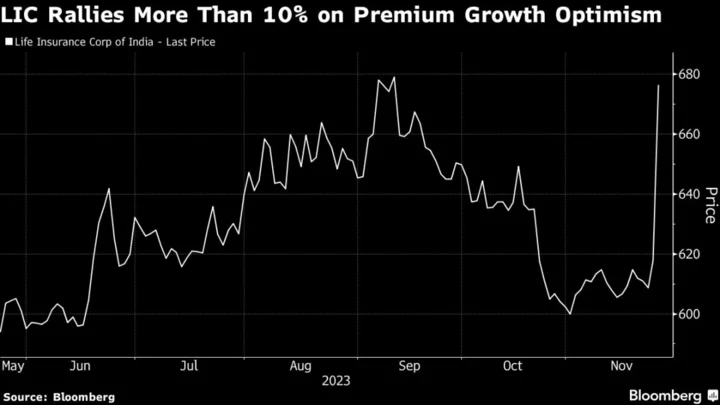China extended tax breaks for consumers buying clean cars through 2027, estimated to be worth 520 billion yuan ($72.3 billion) in the coming four years, in an effort to bolster its flagging electric-vehicle industry.
The move, announced at a briefing in Beijing on Wednesday, is the latest in a series of steps to lift sales and production in the world’s biggest EV market.
“Even though China has accomplished certain achievements in the new energy vehicle industry, the sector still has problems, including insufficient supply of critical technology and uneven development in the wider market,” said Xin Guobin, an official from the Ministry of Industry and Information Technology. “These need to be responded to.”
While new cars are generally subject to a 10% sales tax, it hasn’t applied to clean-energy vehicles since 2014 and the policy was recently extended through 2023. Wednesday’s announcement pushes that date to the end of 2025 for clean cars priced under 300,000 yuan ($41,700) that don’t seat more than nine people. Cars priced under 150,000 yuan will get further support through the end of 2027.
Shares in industry leaders initially shifted higher, but by lunchtime BYD Co. was unchanged, giving up its earlier 1.5% gain. Li Auto Inc. added more than 3.6% in Hong Kong, while Nio Inc. traded 5.8% higher. Top battery maker Contemporary Amperex Technology Co. Ltd. erased earlier gains of as much as 1.1%.
Officials also reiterated their commitment to building more charging infrastructure and promoting EV sales. They are particularly focused on rural areas, where EVs and plug-in hybrids account for as little as 4% of new car sales, compared to the national average of 25.6% last year.
China’s Plan to Boost Rural EV Sales Meets With Skeptical Buyers
China sold nearly 5.67 million clean cars last year, a 90% increase from a year earlier. The government has been doling out generous incentives to buyers and subsidies to carmakers for more than a decade to support the sector, leading hundreds of companies to enter the market. Purchasing an EV gave consumers 60,000 yuan back in incentives at one point, though that program ended last year.
Slowing Sales
As government support decreases and the country endures economic challenges, the once-booming deliveries of clean cars in China are slowing. EV and plug-in hybrid sales grew about 41% from January through May, according to the country’s Passenger Car Association, far below the 120% surge in the same five-month period last year. The letup has come despite many automakers cutting prices to grab market share, a trend triggered by Tesla Inc.
The authorities have indicated they are cutting off support for troubled carmakers, and will let market forces and regulatory mechanisms speed up the exit of failing players. The push for consolidation will help create internationally competitive Chinese auto brands, Xin said during the briefing.
Beijing also aims to deepen international cooperation at a time when geopolitical tension with the West is posing questions over supply chain exposure to the country. China welcomes foreign investment and cooperation in technologies such as solid-state batteries and self-driving vehicles. Chinese carmakers are also encouraged to invest and set up factories overseas, Xin said.
“We should work together to maintain the stability of supply chains,” he said, adding that auto companies from different countries can cooperate to create an efficient global supply chain system.
US Lawmakers to Press Auto CEOs Over China Supply Chains (1)
Bloomberg News previously reported that China was considering the extensions.
--With assistance from Danny Lee.
(Updates with details from briefing in the ninth to 11th paragraphs, share prices in the fifth paragraph)









